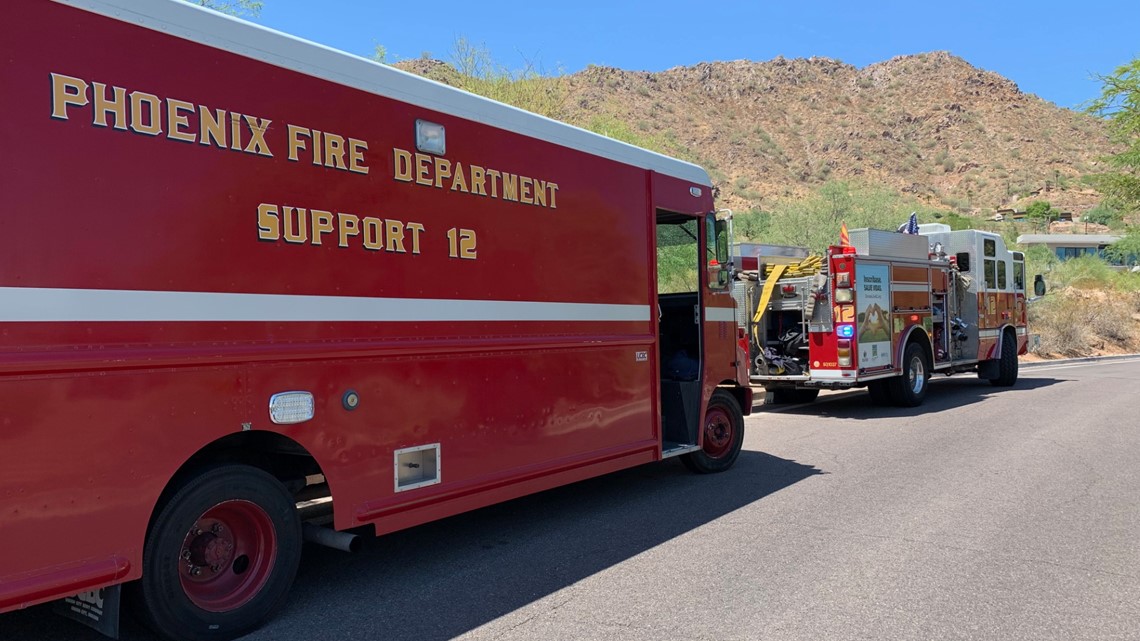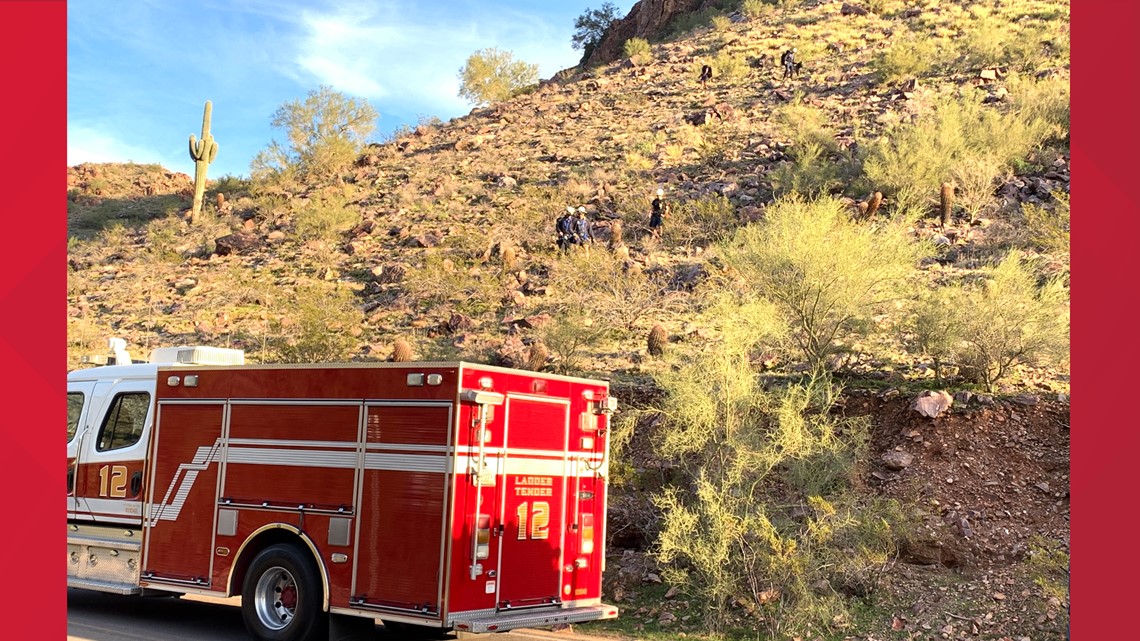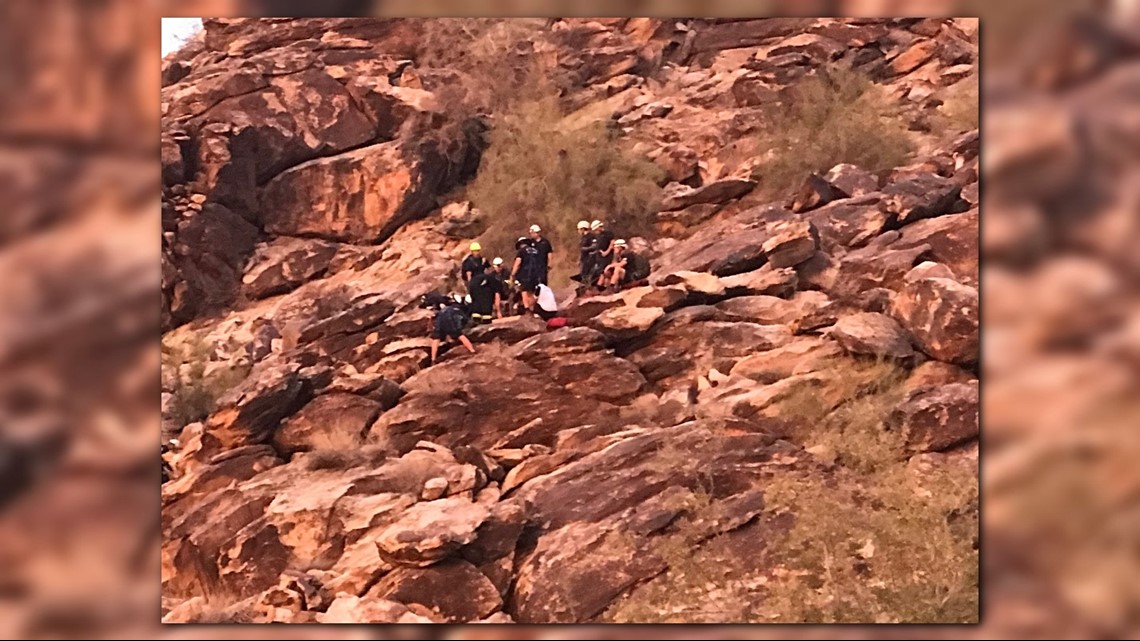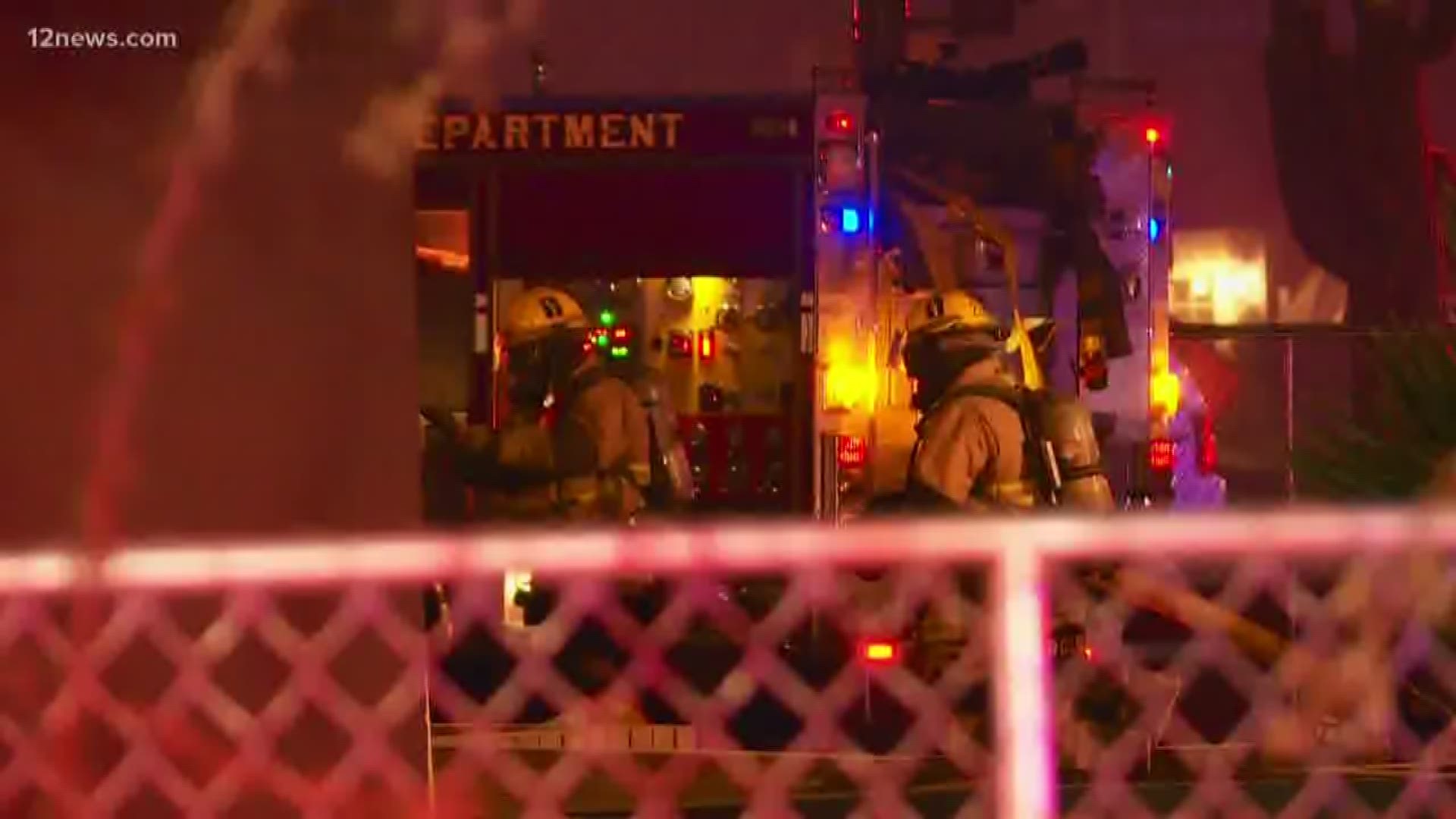The Phoenix Fire Department responded to more than 250 mountain rescue calls in 2019, more than one every other day.
Working with numbers provided by the Phoenix Fire Department, 12 News broke that number down by mountain and focused on the four busiest mountains in the area: Camelback Mountain, Piestewa Peak, South Mountain, and Papago Park.
Papago Park had the fewest number of rescue calls, with 14. Piestewa Peak had 43 rescue calls that year. South Mountain had the second-highest number of rescue calls, 63. The highest number of rescue calls came from Camelback Mountain, with 90 in 2019 alone.
Why are there so many rescues? And how much is that costing taxpayers?
The Phoenix Fire Department does not keep track of what each individual rescue costs.


“For us to extrapolate numbers out of an individual call, it would almost be impossible,” Phoenix Fire spokesman Rob McDade said.
According to McDade, taxpayers pay to have a fully staffed fire department at the ready at all times, whether the firefighters are putting out a fire or rescuing a hiker. The costs are paid daily, regardless of what happens each day.
The department has an annual budget of $397 million. That money is used to operate 59 fire stations that responded to 238,815 calls in the City of Phoenix in 2019. There were 255 calls considered mountain rescues during that time. The Department estimates another 50 or so calls went out but did not end up requiring a response, resulting in a canceled call.
“The trucks are paid for,” McDade said. “The folks that are working that day, they’re already on payroll. We expect to go on calls.”
It costs $1,828,099 per year to run a fire truck. If you divide that number by 365 and then again by 24, that breaks down to a little over $200 an hour per truck per day. Each mountain rescue will use at least two trucks — and likely more than that.
Most mountain rescues take about an hour.
Some rescues may require the use of a helicopter. The Phoenix Police Department pilots a chopper codenamed Firebird 10 when the rescue requires an aircraft technician. An hour of fuel and maintenance for Firebird 10 costs $1,200, according to the police department.


With all of those costs, the question has been asked many times whether the city or state should implement a stupid hiker law, similar to the stupid motorist law, which requires drivers who go around roadblocks and need to be rescued from flooded roads to pay for their rescue. District One City Councilwoman Thelda Williams at one time advocated for such a law or ordinance. She backed off when told that such a law or ordinance might discourage people who need help from calling for help.
12 News asked the fire department about a stupid hiker law again.
With fire crews putting their own lives on the line to save others, if a hiker gets dehydrated on Camelback Mountain when it is 110 degrees outside and the technical rescue team gets called in, should the hiker have to pay?
The fire department still rejects the idea.
“We understand the frustration that the public might have when they see numerous resources on a daily basis being used on the mountain for those rescues, but remember we also have to look at drunk driving,” McDade said. “If a drunk driver causes a major accident and we have to use the jaws of life to extricate someone out of a car, we’re not going to send them a bill either.”
“When you’re in public safety, you can’t look at monetary value,” McDade said. “All we look at is the lives we can protect and those we can save. We’ll let everybody else handle the stupid hiker law or however they want to do that, and if the city council came up with something, we’ll just follow orders.”
According to the fire department, more people visit the mountains from October to April, when the weather is nicer.
Calls for help are common for everything from dehydration to injury to getting lost in the dark. But about as many people end up needing help from May to September because it’s so much hotter so a higher percentage of people call for help.
Captain Dave Schmitt is a member of the technical rescue team, and he's one of the dozens of elite, specially trained firefighters who relish their positions on the TRT.
“During the summer, you can just assume you’re going up the mountain if not once, twice or three times,” Captain Schmitt said.


“We’re here to help them,” Schmitt said. “Those calls excite us. Everybody here at station 12, they know what they’re getting into. We volunteer for this. We want to go up the mountain and do something that makes a difference.”

